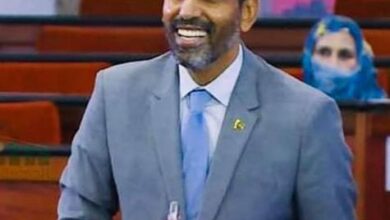Artificial Insemination Means More Milk in Mauritania
(IPS) – Cattle herder Mohamed Ould Bouthiah has seen the future, and he likes what he sees. “Five of my cows are crossbreeds with a European variety, and those five together produce 80 litres of milk a day.”
Bouthiah, 50, says that with a herd of 150 of the local breed of cows, he could only produce 320 litres of milk per day on his farm in Rosso, in the south of Mauritania, but he could produce the same with just 20 of the hybrid cattle.
“Genetic improvement is the best way to promote cattle rearing, because I can turn a profit with a smaller herd that goes through less fodder,” Bouthiah, a cattle herder in Rosso, south of Mauritania, told IPS.
Mauritanians are big consumers of milk, drinking an average of nearly a litre of milk per person per day, compared to just 0.08 litres per person across sub-Saharan Africa, said Mohamed Lemine Ould Hakky, head of the division responsible for improving animal production at the Ministry for Rural Development.
According to the ministry, Mauritania imports 70 percent of its dairy needs.
Yet a 2004 study done by the World Bank suggested that if the livestock sector received greater attention, it could meet 70 percent of the country’s dairy needs.
Hakky told IPS that local cattle breeds lacked some important characteristics.
“To overcome these shortcomings, between 2006 and 2009, the rural development ministry put a programme in place to improve the genetic stock and promote animal health. The campaign targeted 1,000 dairy cows in the regions of Trarza, Brakna and Gorgol (in the southwest and southeast of the country),” he said.
Hakky is also responsible for a pilot farm at Idini, 50 kilometres east of the capital, Nouakchott, set up in 2011 to promote meat and diary production. Some 300 cows were inseminated.
While Mauritania’s traditional cattle breeds don’t produce more than three litres of milk per day, the hybrid cattle can produce over 16 litres per day, according to Dr Mohamed Ould Hacen, a vet with the rural development ministry’s livestock office.
When it comes to meat production, Hacen also said that the birthweight for the hybrid calves averages 28 kilos, compared to 16 kg for local breeds.
Zeindine Diallo, who rears cattle at Gorgol, wants better care for the inseminated cows in order to allow the country’s herders to move away from the existing breeds and increase production.
“After three years, the artificial insemination operations, carried out with the technical support of the Inter-State School for Veterinary Science and Medicine based in Dakar (Senegal) are having an effect, as the hybrid heifers themselves begin to calve. Of the 1,000 cows that have been inseminated, we’ve achieved a 40 percent success rate,” Hacen said.
According to Hakky, total consumption of milk in Mauritania is some 52,000 tonnes per year, more than three times greater than domestic production of 12,000 tonnes.
Official trade statistics show that the annual cost of dairy imports into Mauritania is 50 million dollars, according to El Hacen Ould Taleb, a herder and president of the National Grouping of Associations of Pastoral Cooperatives (GNAP).
In November, the minister for rural development, Brahim Ould M’Bareck, announced the creation of two more farms for artificial insemination, at Kankossa Lake in the south of the country, and at the Mahmouda Depression in the southeast.
Fodder will also be grown in these two areas, with help from Chinese experts, the minister added.
GNAP is calling for more extensive scientific research into the sustainability and profitability of the experiment. Taleb told IPS he doesn’t think Mauritania is currently able to produce enough cattle feed for intensive livestock rearing.
The four domestic milk production companies, all based in the capital, can only absorb five percent of the country’s dairy output, Hakky said. The rest, he says, is consumed locally in camps, villages and other cities, and also goes to feed calves, baby camels and smaller livestock.
“We are calling for a facility to be set up to produce long-life milk, and for tanning factories. And for increased production of fodder to allow the country to save the 50 million dollars devoted to imports,” Taleb said. “And – why not, in time – for the export of milk from Mauritania.”






